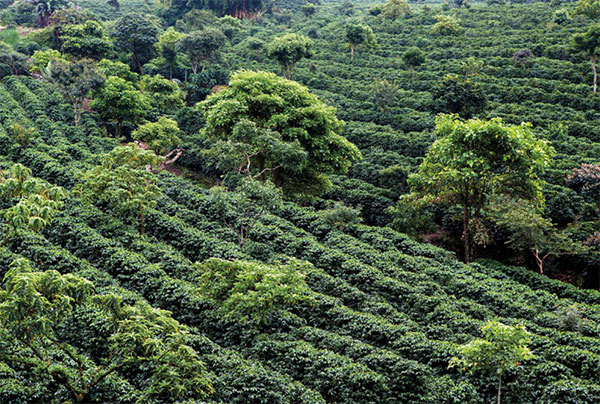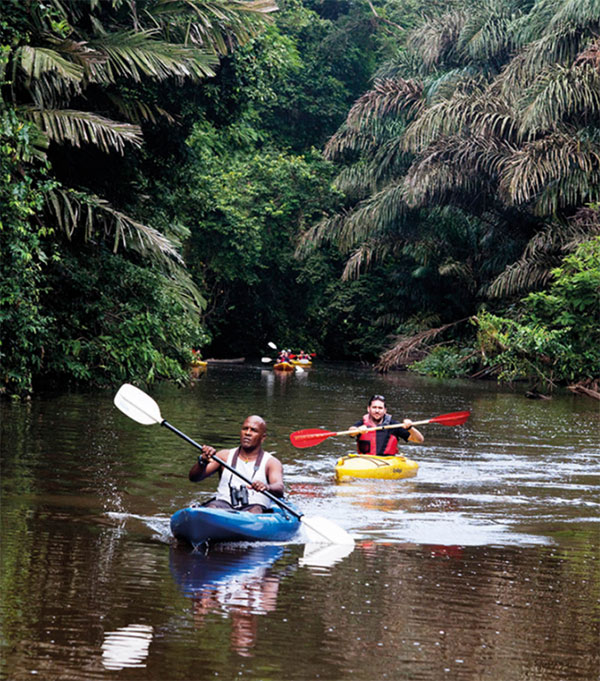COSTA RICAN SNOW
When white coffee blossoms blanket the fields of the Central Valley, filling the air with a sweet jasmine-like fragrance, the Ticos call it ‘Costa Rican snow.’
You might well surmise that coffee is indigenous to Costa Rica; however, it was brought by the Spanish, French, and Portuguese from Ethiopia and Yemen. In the early 1800s, when seeds were first planted in Costa Rica, coffee plants were merely ornamental, grown to decorate patios and courtyards with their glossy green leaves, seasonal white flowers, and red berries. Costa Ricans had to be persuaded, even coerced, into growing them so the country might have a national export crop. Every Tico family was required by law to have at least a couple of bushes in the yard. The government awarded free plants to the poor and grants of land to anyone who was willing to plant coffee on it.
The Central Valley has the ideal conditions for producing coffee: altitude above 1,200 meters (4,000ft); temperatures averaging between 15°C and 28°C (59°F and 82°F); and the right soil conditions. Coffee estates quickly occupied much of the land, except for that needed to graze the oxen that lugged the coffee-laden carts. As the only Costa Rican export, the country’s financial resources were organized to support it. By 1840, coffee had become big business, carried by oxcart through mountains to the Pacific port at Puntarenas, then by ship to Chile and on to Europe. By the mid-1800s an oligarchy of coffee barons had risen to positions of power and wealth, for the most part through processing and exporting the bean, rather than growing it.

Shade grown coffee plantations, Central Valle.
Corrie Wingate/Apa Publications
Economic dependency
Despite its early successes, Costa Rica’s coffee industry has been a mixed blessing at times. The country incurred a heavy debt borrowing US$3 million from Great Britain to finance the Atlantic railroad so coffee could be exported from the Caribbean port of Limón. And when coffee hit a low on the international market in 1900, the result was a severe shortage of basic foods in Costa Rica that year. This dependency on an overseas market has left Costa Ricans vulnerable on many occasions. Throughout the 20th century, coffee prices fluctuated wildly and the health of the nation’s economy varied accordingly.
Traditionally, banana, citrus, and poro trees were planted in the coffee fields to provide nutrients and shade for coffee plants. Later coffee hybrids did not need shade, and treeless fields produced more yield per hectare. These varieties, however, depleted the soil more rapidly and required fertilizer to enrich it, adding to the cost of production. Today, many coffee-growers have returned to the traditional shade-loving plants, pleasing environmentalists who advocate shade-grown coffee.
Since coffee grows best in a mountainous climate, many of the hillsides in the Central Valley are covered with rows of bright green bushes, reflecting the sun with their shiny, luxuriant leaves. Today, coffee growers are concentrating on producing shade-grown and certified organic beans, along with only the best high-altitude, top-quality specialty coffees from highland regions around Poás, Barva de Heredia, Tres Ríos, and Tarrazú, rated by many aficionados among the best in the world.
With the help of a naturalist guide, you may catch glimpses of sloths, crocodiles, caimans, and basking freshwater turtles. High up in the exuberant vegetation, multicolored parrots squawk noisily, while cranky howler monkeys shake the branches. Around 19,000 hectares (47,000 acres) of the coast and hinterland have been designated as the Parque Nacional Tortuguero (Tortuguero National Park; www.acto.go.cr; Mon–Fri 6am–4pm). There are many ways to navigate its maze of waterways, including renting a dugout canoe or kayak. The best way to tour the canals is on a boat with an electric motor, guided by an expert naturalist. Note that you cannot enter the land portion of the park without wearing rubber boots, which you can rent at the park office or in the village. Or take a package tour that includes a room at one of the jungle lodges that range from modest to luxurious, plus meals, naturalist guides, and the trip through the canals. All of the Tortuguero hotels offer guided river trips and transportation either by bus and boat or by small plane from San José. Launches going up to Tortuguero also depart from Moín, just a few kilometers north of Limón. NatureAir and SANSA have short, scheduled flights from San José to Tortuguero.
Farther north, up the canals, the village of Tortuguero ! [map] sits on a very narrow spit of land bordered by the Caribbean Sea and the Tortuguero River. The best thing about this village is that there are no cars, just narrow paths winding through exuberant greenery, with palm trees rustling overhead. Wooden houses sit on stilts, amid a growing number of restaurants, stores, and cabinas catering to tourists.
Puerto Limón
Puerto Limón @ [map] (pop. 61,000) is pure Caribbean. With its rich, ripe jumble of sights and sounds and smells, it is a hot, steamy, laid-back place. Wildlife includes sloths, monkeys, racoons and much birdlife. Most middle-class Ticos who live in the Central Valley consider it something of a disgrace, crime-ridden and poor. But multimillion-dollar regeneration plans are slowly making it more visitor-friendly. The main tourist focus here is the huge cruise-ship dock that disgorges thousands of visitors every year. In the center of Limón you won’t find the usual cathedral or soccer field facing a plaza such as you see in all the towns of the Central Valley. Instead Parque Vargas, named after a local governor, is filled with banyan trees with buttress roots that the townspeople use for seats. Most travelers stay at the Hotel Park (tel: 2798 0555) or more upscale hotels north or south of the city center. Beware, however, that theft (particularly from cars) and muggings are a problem in the city.

Wildlife watching from the water, Tortuguero National Park.
Corrie Wingate/Apa Publications